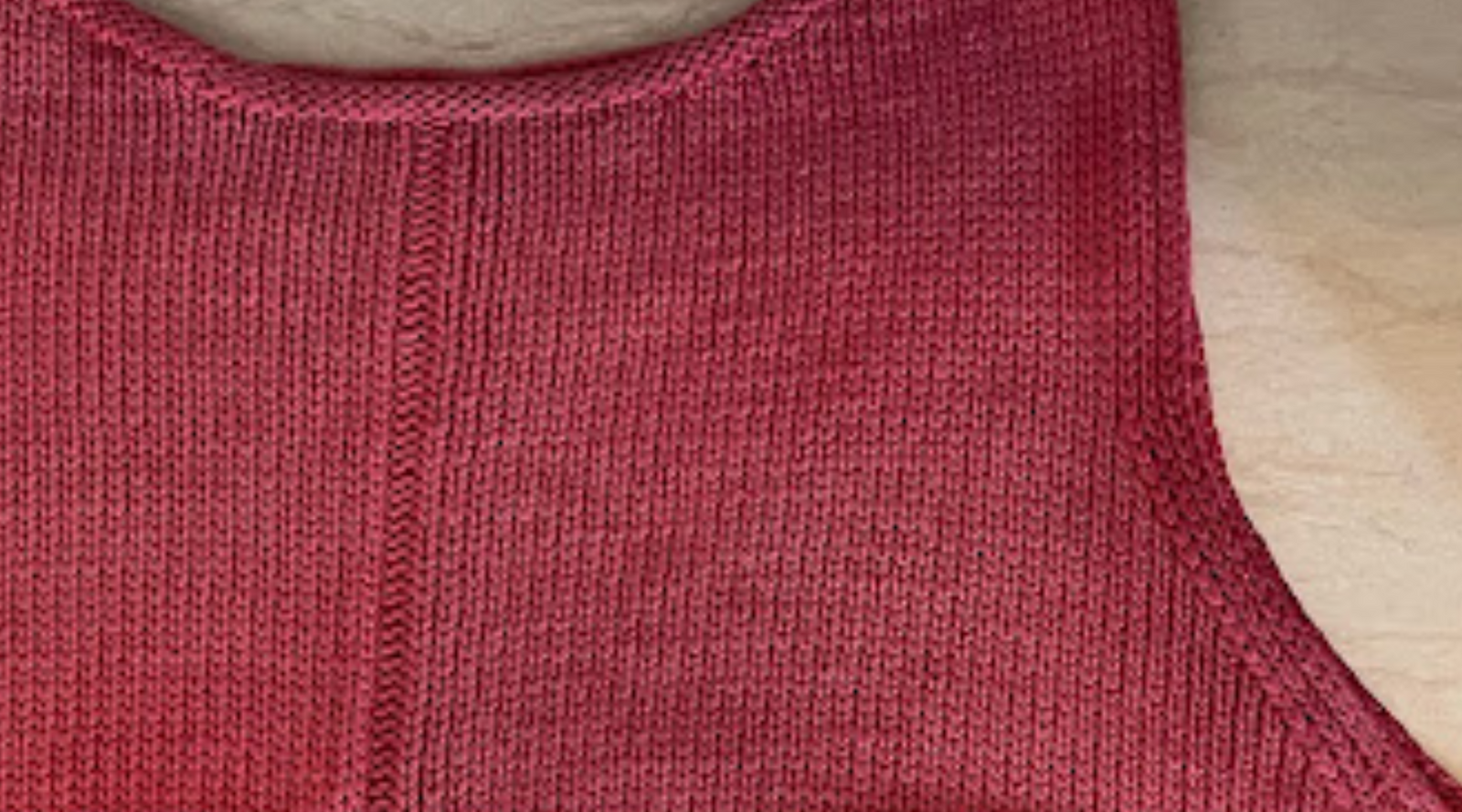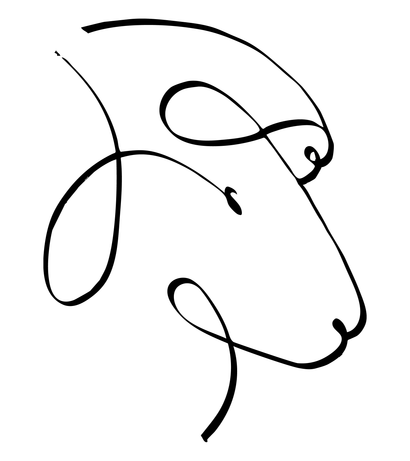Free shipping on all domestic orders over $150
Free shipping on all domestic orders over $150
Shop
Add description, images, menus and links to your mega menu
A column with no settings can be used as a spacer
Link to your collections, sales and even external links
Add up to five columns
Add description, images, menus and links to your mega menu
A column with no settings can be used as a spacer
Link to your collections, sales and even external links
Add up to five columns

Finishing your knitting - here's a tip for easier seaming
August 20, 2024 3 min read 3 Comments
Finishing knitting is a special passion of mine. I especially enjoy finishing sweaters. There's something about the whole process of seeing two dimensional pieces come together into a three dimensional whole. I know a lot of knitters hate finishing, and I get it. Seaming can be very challenging, especially if you haven't set yourself up for finishing success as you knit your fabric.
Good finishing starts in the knitting.
One of the biggest and most common mistakes I see knitters make that determines their finishing experience is the placement of decreases.
Time and time again I see knitters placing increases and especially decreases at the very edge of the fabric. It seems like such a little thing - but trust me when I tell you it's huge.
Always work your decreases away from the edge.
In all fairness, it is confusing. The pattern does say, “decrease at each end of the row”
That DOES NOT MEAN work the first two stitches together and the last two stitches together, right?
I know it’s what the pattern says,
But it’s not what the pattern means.
You always want to work those decreases at least one stitch away from the edge.
At least one. Two is even better
Right side decrease instructions should be written to say “decrease as follows:
But that takes up more room, and when you’re dealing with a printed publication, every line counts. Maybe they assume you know this.
I’ll say it again: You always want to work your decreases at least one stitch away from the edge.
Why does it matter where you place your decreases?
When you’re going to seam something, you want to maintain a nice clean column where you can put your seam or pick up stitches. Decreases in the first two or last two stitches mess that up. Even if you plan to have an open edge on your garment, you want to move the shaping away so you can create a smooth slipped stitch selvedge
I can already hear you asking, What about garments in the round? It’s kind of the same thing. Clearly you won’t be seaming the sides of a seamless garment, but moving the decreases a stitch or two away from the side center helps distribute the tension that decreases cause. Lots of decreases right next to each other pull the fabric up. Think about how lace scallops at the bottom edge. Moving decreases away from each other helps prevent that pull.
Also--even seamless garments often have edging around the neckline or armhole. Keeping the shaping away from the edges makes picking up much easier.
So, when you see a pattern that says decrease at the beginning and end of the next row, remember that what they mean is really work 1 or 2 stitches and then make your decrease. Then work to 3 or 4 stitches before the end of the row, decrease, work to end.
Try this on your next sweater and see how much easier it is to seam it, or to pick up stitches around the neck or armhole. Let me know in the comments what you think!
Warmly,
Ellen
For more tips on how to set yourself up for finishing success, check out this blog post
And for a look at some of the other things patterns don’t tell you but should, check out my video below.
3 Responses
Chris Guy
August 22, 2024
As always Ellen, so helpful in helping me relax about seaming. Your explanations on seaming have helped me get rid of the boogeyman hiding in my yarn bag. 💕
Helen
August 20, 2024
This is great! I need all the help I can get when it comes to putting sweaters together. At the moment to are simply waiting!
My other questions relate to blocking. I think you’ve said you don’t immerse cotton sweaters in water before blocking. So how do you handle them. I do have a great little steamer and I’m not the greatest with an iron!!
Thanks for your help and keep those seaming suggestions coming please. How do you handle picking up stitches if not along the edge say of a neckline?


Deanna
August 22, 2024
I am saving this info. Thank you, Ellen!